disease
Table of Contents
Goldfish are more prone to diseases than other ornamental fish and other species. Here are some well-known diseases that you may encounter if you buy goldfish.
1. White spot disease
2. Tailstock disease
3. Water mold disease
4. Pitting disease
5. Pine cone disease
6. sea lice
7. Ikarimushi
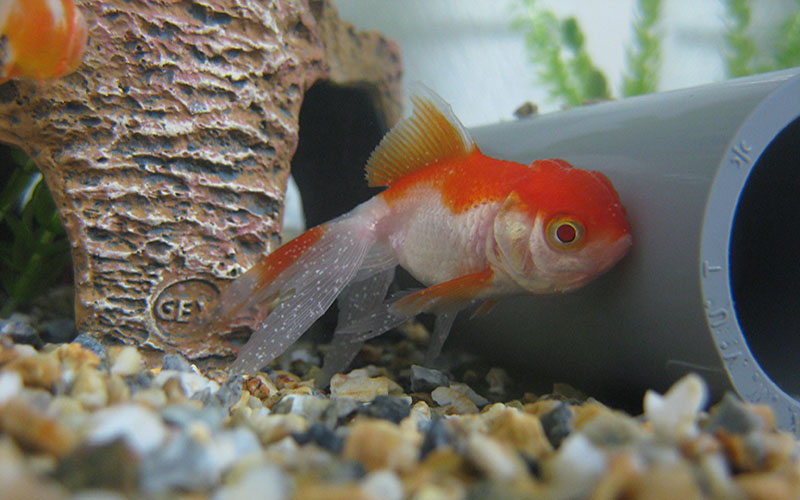
If you keep goldfish, you've probably heard of it. It is by far the most likely disease to affect goldfish. Most cases of white spot disease are severe and cannot be cured, but in the early stages it is an easy disease to cure if you know how to do it.
Very small white spots appear on the fins and other parts of the body and spread to the entire body.In the early stages of the disease, goldfish with white spot disease may be itchy and rub the affected area against something. By the time the entire body is covered with a white membrane, the goldfish stops moving and eventually declines and dies. This film is an abnormal mucus secreted by the goldfish's mucous membranes when irritated by the parasite. If the parasite is on the gills, the gills may adhere to the mucus and the goldfish may suffocate to death. In white spot disease, the white spots spread from the caudal fin toward the head.
The white spot worms, which are the cause of the problem, are very sensitive to high temperatures and can be eliminated by raising the water temperature in the aquarium to nearly 30°C for two or three days and then bathing the fish in a separate container with a chemical solution.
To learn more about white spot disease, please click here.
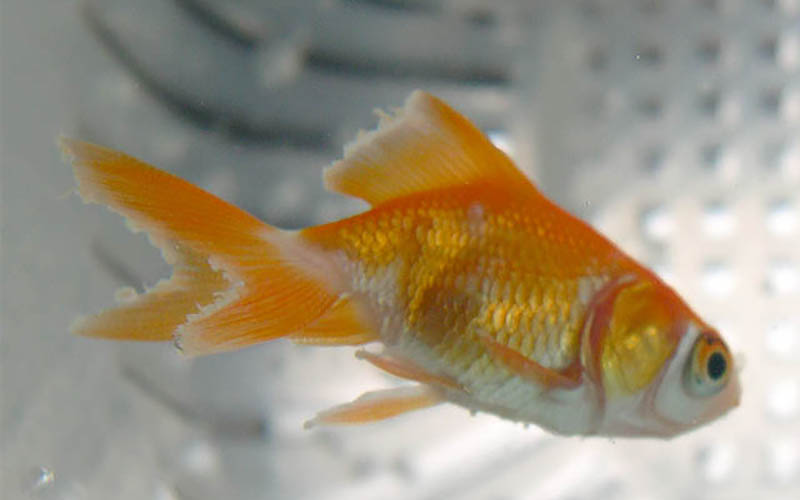
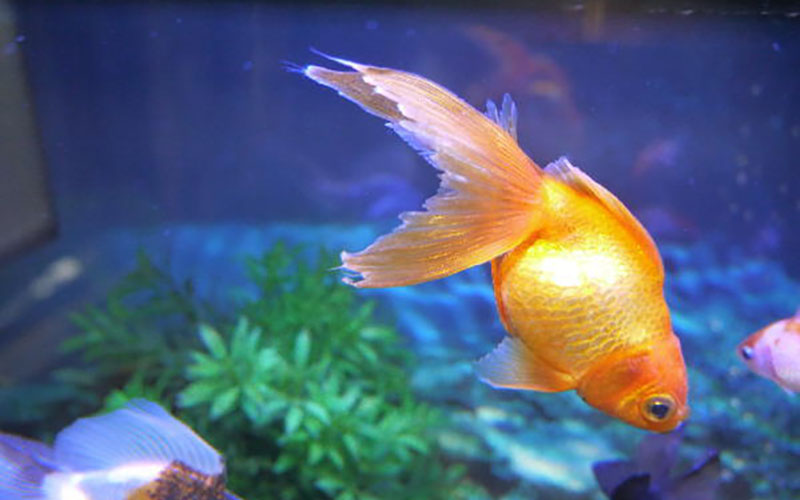
If you keep goldfish, this disease is as likely to occur as white spot disease. It occurs when a fungus called Flexibacter calamnaris infects the fins. Basically, the fungus, such as Flexibacter, is transmitted through wounds.
When the tail and pectoral fins are affected, the tips turn white and eventually become rotten and torn off.
The best way to cure it is to give it a medicated bath with medicine, or to use a salt bath together with salt. Bacteria such as Flexibacter calamnaris are very sensitive to salt, so salt baths heal more quickly. However, even when cured, damaged fins often cannot be restored, so early treatment is important.
To learn more about tailgating disease, please click here.

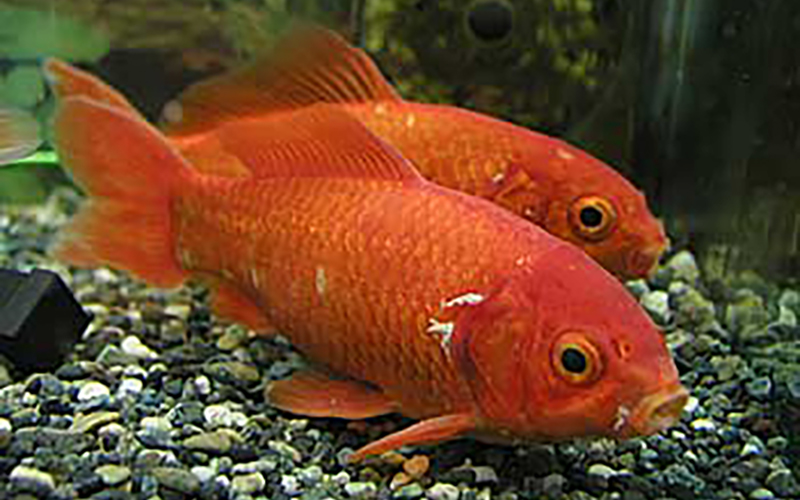
Water mold disease often occurs in early spring or fall and does not occur in uninjured goldfish because it is transmitted through wounds.
White cotton-like fungus grows on the skin and gills, and the affected areas sore and crumble.When the fungus spreads throughout the body, it looks like a cotton coat, which may become dirty with mud and debris, and is sometimes called cotton cover disease or mud cover disease. The goldfish gradually becomes weak and stays still near the surface of the water, and finally declines and dies.
For early symptoms, give the patient a medicated bath and see what happens. For severe cases, carefully remove the fungus with tweezers and apply the medication directly to the trunk.
To learn more about water mold disease, click here.
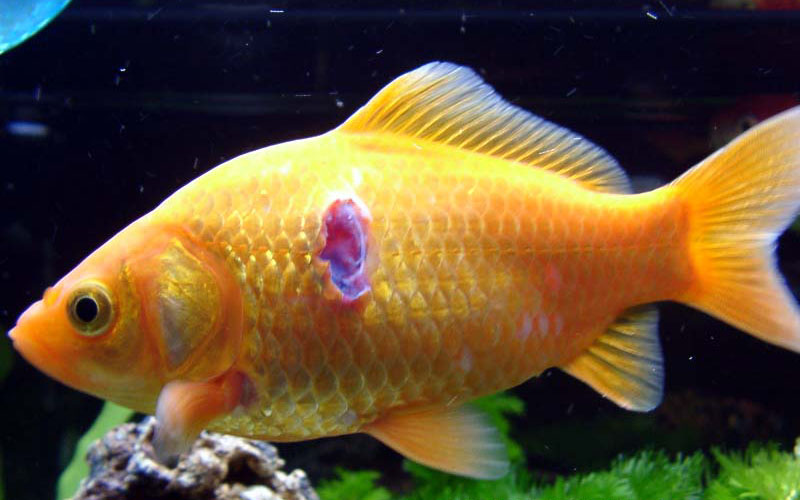
Hole disease often occurs in early spring or fall, and although it may look severe, the goldfish are often swimming fine.
first (of all)White spots appear on a single scale. The spots spread and begin to bleed.Eventually, ulcers form, scales fall off, and skin and flesh shave off. In severe cases, a hole as large as 2 cm in diameter may appear, but the goldfish is healthy and does not lose its appetite. However, if the hole reaches the internal organs, it is fatal and requires attention.
Although it may seem like a serious disease, there is no need to panic at all, as it does not often become a serious illness. It is common in early spring when the water temperature is around 15 to 18℃, but the incidence decreases as the water temperature rises and is usually gone by the time summer comes. If the symptoms are mild, simply raise the water temperature to 30°C. If the symptoms are severe, raise the water temperature to 4 to 5 days. If the symptoms are severe, it is recommended to give the fish a medicated bath for 4 or 5 days.
To learn more about hole disease, please click here.
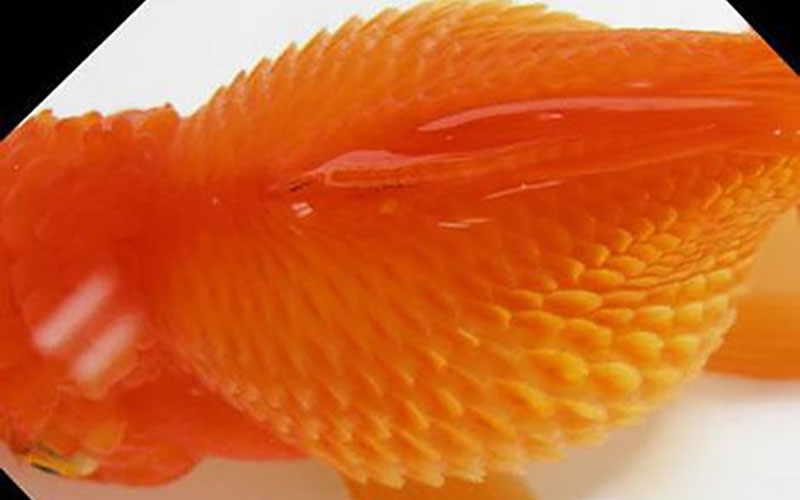
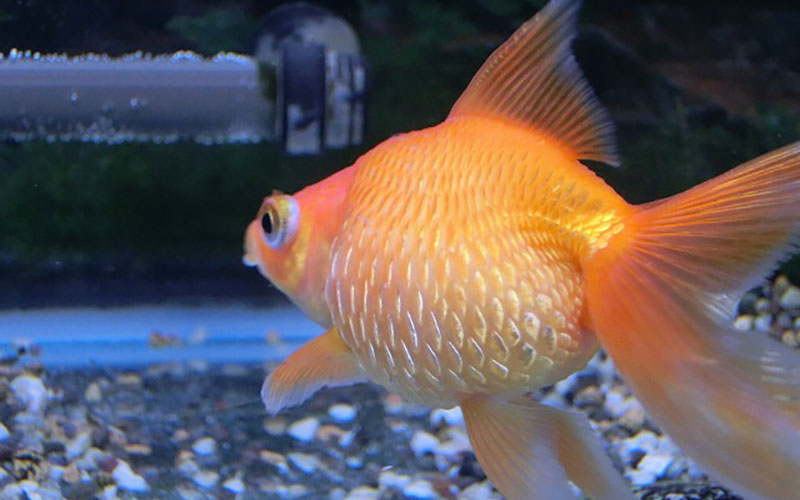
It develops suddenly, regardless of the season. It is difficult to treat, so prevention is important.
The scales in the affected area begin to stand up like wisps, causing shedding and bleeding.As the disease progresses, the scales of the entire body stand up like open pine needles, and the abdomen swells with accumulated water. The eyes also protrude and emit a peculiar odor.
First, the sick goldfish must be quarantined. Then, they should be bathed in medicine or other medications.
To learn more about pine cone disease, please click here.
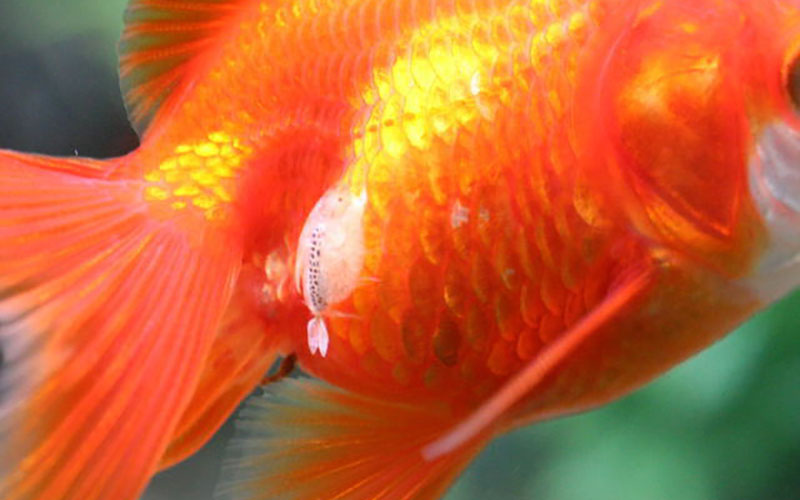
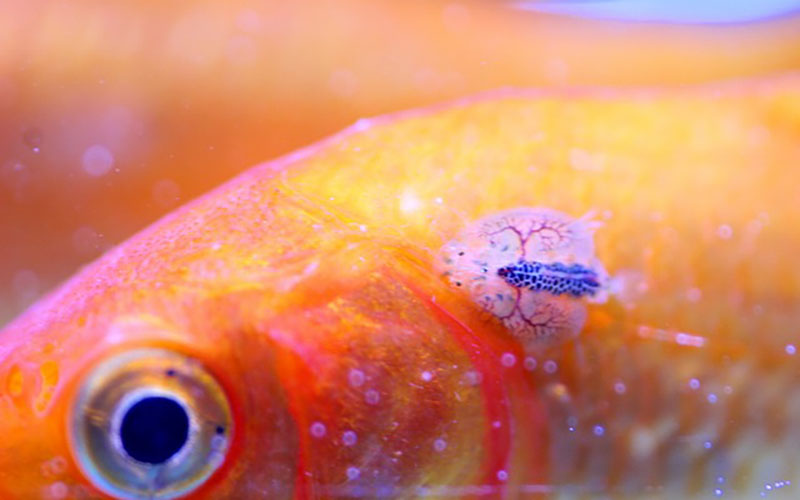
It is especially common in early summer and early fall and tends to occur when the water is dirty.
When the whitefly sucks blood, it causes inflammation and red bleeding spots, which causes the goldfish to itch and constantly rub its body against something.Dozens of parasites may be present, at which time the goldfish may become anemic and listless, drifting near the surface of the water. They rarely die unless it is too late, but there is a chance that sterilization or other contaminants can enter through the wound and cause other diseases.
You can use tweezers to remove the sea lice one by one, but if you are not used to doing this, it is safer to give the goldfish a medicated bath in a separate container, as it may hurt the goldfish.
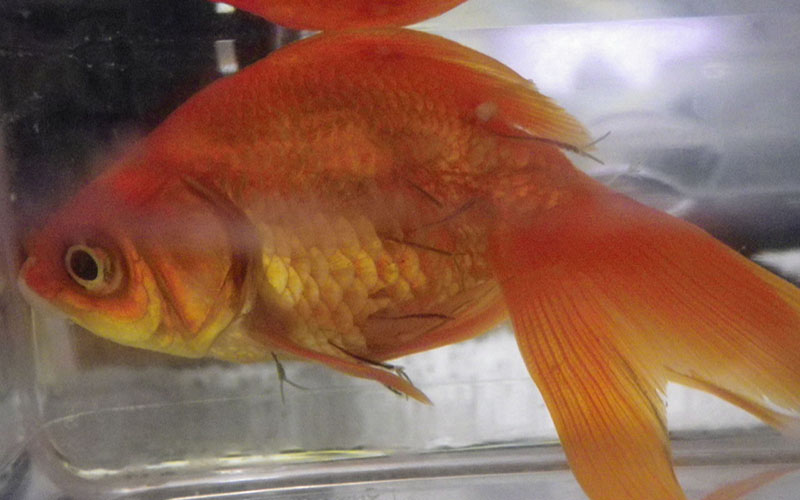
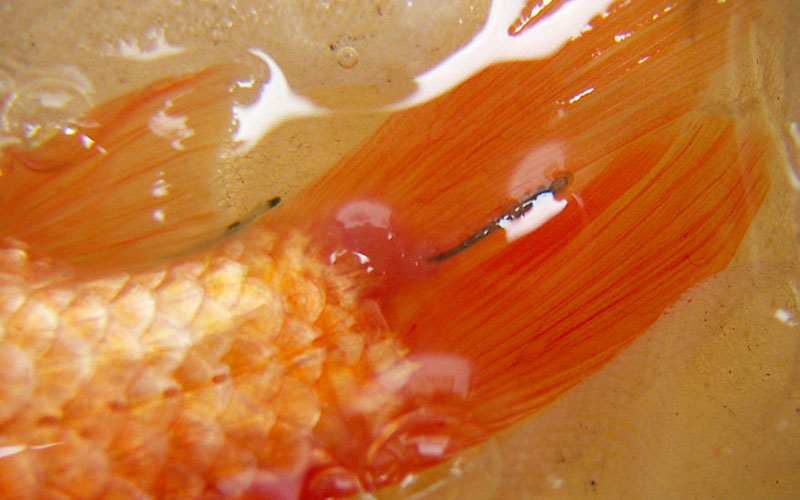
The disease tends to appear from spring to fall. Because it is a parasite, it can be seen with the naked eye, making early detection easy.
The anchovy sticks its head under the scales and other parts of the body and hangs from the goldfish.Because they are large, they are not difficult to find, but when parasitized, the goldfish will look as if the affected area has been rubbed with gravel or other material. If there are too many, they may become debilitated and die.
Remove the head with tweezers so that no head remains, and then disinfect the wound. Medicated baths are also effective. It is important to remember to disinfect the aquarium and dry it in the sun.
If you would like to learn more about the carrion beetle, please click here as well.